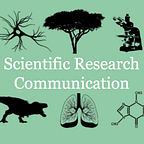Setting Our Sights on Astrocytes
Author: Jeff Stolley
Editors: Katherine Hill, Sienna Schaeffer, Reed Owens-Kurtz
You may have heard that the brain is full of cells called neurons that form networks of intercellular communication. What is often left unsaid is that the brain also contains “glial cells,” which are about as numerous(1). Historically, scientists thought that these cells only served as structural support for neurons. In the past few decades, research has overturned this view by showing that glial cells serve a variety of important functions(2). They prune connections between neurons, create barriers to prevent unwanted substances from entering the brain, and insulate the connections between neurons to help speed up communication. A leading neuroscientist at the University of Minnesota, Dr. Alfonso Araque, helped discover that particular types of glial cells called astrocytes play a direct role in information processing between neurons(3). This means that information is not simply transferred between neurons, but is affected by the activity of astrocytes. Researchers at the University of Minnesota and around the world continue to examine the functions of astrocytes and a recent study has provided a useful new tool in this quest.
To research astrocytes you must first be able to identify them amongst the mix of other cells in the brain, which can be tricky. The Khakh laboratory of UCLA designed transgenic mice (mice with non-mouse genes) with astrocytes that can be selectively visualized and manipulated apart from other cell types4. These mice have astrocytes that can be induced to express a particular gene once the researchers treat them with small injections of a drug called tamoxifen in a technique involving gene recombination with a protein called Cre-recombinase. The researchers found a promoter (a region of DNA that helps specify when, how much and in what cells a gene is expressed) that would allow the Cre-recombinase to be expressed only in astrocytes, and in all astrocytes. When the mice are treated with tamoxifen, the Cre-recombinase alters the astrocytes’ DNA in such a way that they begin expressing the gene of interest. Other researchers have used this technique to study astrocytes before, but the ability to target all subtypes of astrocytes without altering the DNA of other cells is novel(4). The researchers tested the effectiveness of their new mice by creating mice that would express the green fluorescent protein, which can be easily observed by scientists because, as its name suggests, it fluoresces green. Among all cell types of the brain, they only observed green fluorescence emanating from astrocytes as expected.
Having confirmed their ability to now selectively induce gene expression in astrocytes, the Khakh laboratory began investigating their new tool’s capabilities. They first evaluated their ability to measure calcium signaling in astrocytes (an important mode of cell communication) using one gene and then characterized the expression of other genes within astrocytes using a different gene. The authors suggest that future studies may find these mice useful for exploring astrocyte development, the role they play in information processing between neurons, and the function of their disease-causing gene variants. The authors point out that they have only confirmed their results in adult mice, 80 days old, and so they reiterated the need for future studies to include controls to confirm that astrocytes are fully and exclusively targeted under given conditions. Though the Khakh lab has only just begun exploring with these new mice, we can see the future of astrocyte research brightening.
- Herculano-Houzel, S. & Lent, R. Isotropic Fractionator: A Simple, Rapid Method for the Quantification of Total Cell and Neuron Numbers in the Brain. J. Neurosci. 25, 2518–2521 (2005).
- Zhang, Y. & Barres, B. A. Astrocyte heterogeneity: an underappreciated topic in neurobiology. Current Opinion in Neurobiology 20, 588–594 (2010).
- Araque, A., Parpura, V., Sanzgiri, R. P. & Haydon, P. G. Tripartite synapses: glia, the unacknowledged partner. Trends in Neurosciences 22, 208–215 (1999).
- Srinivasan, R. et al. New Transgenic Mouse Lines for Selectively Targeting Astrocytes and Studying Calcium Signals in Astrocyte Processes In Situ and In Vivo. Neuron 92, 1181–1195 (2016).
